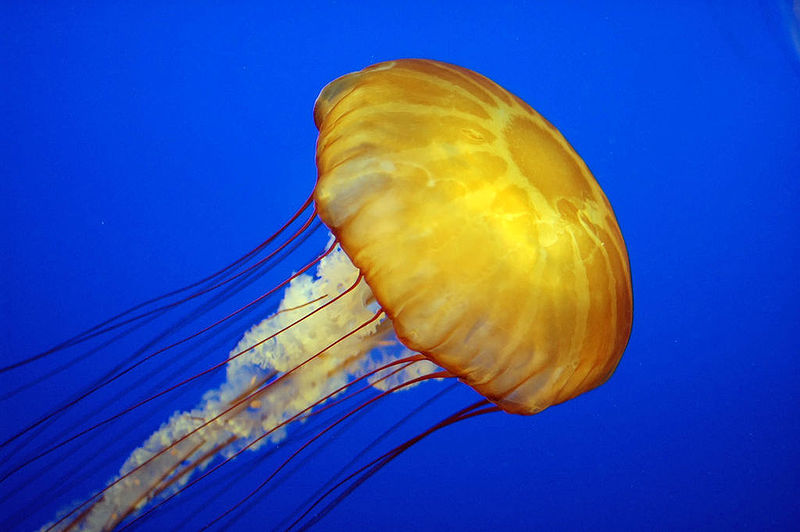
Category: Invertebrates

Jellyfish are typically free-swimming animals consisting of a gelatinous, inverted-umbrella body form (the bell) with trailing tentacles. Having roamed the sea for the last 500 (and maybe 700!) million years, they are the oldest known multi-cellular animal. Since jellyfish are not true fish, many experts prefer to use the name “jellies” to avoid cultivating misconceptions. The body of a jellyfish is between 95% and 98% water and most do not have specialized digestive, osmoregulatory, central nervous, respiratory, or circulatory systems. They can range in size from about 1 millimeter to a bell height and diameter of over 2 meters (6.6 feet). The lion’s mane jellyfish (Cyanea capillata) has fine, threadlike tentacles that may extend over 36.5 meters (120 feet!).
https://en.wikipedia.org/wiki/Jellyfish

The world’s first Animals
Invertebrates were the first animals to evolve. While their soft bodies left precious few records behind, there are fossils of sponge-like animals that are 665 million years old, as well as traces of tracks and burros from worm-like animals going back 1 billion years. By comparison, the earliest birds appeared only 150 million years ago! And not only were invertebrates first, they are the most plentiful of animals - it is estimated that 97% of all animals living on the Earth today are invertebrates, with several groups containing more species than all vertebrates combined!
Learn more >>
 Discover Animals is a web-based educational resource offered by the NAIA
Discover Animals is a web-based educational resource offered by the NAIA